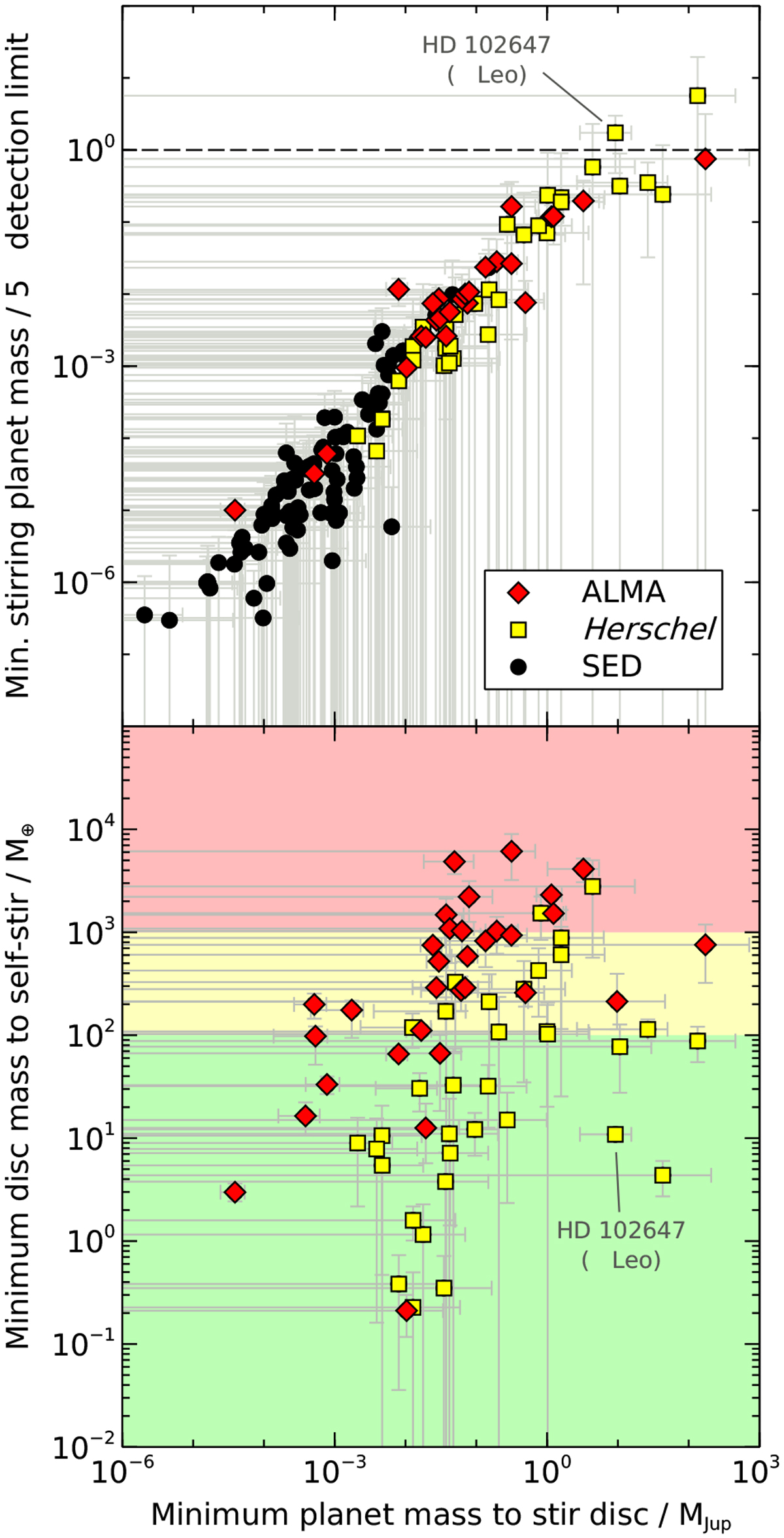Fig. 12

Download original image
Constraints on the planet masses required to stir debris discs. Horizontal axes show the minimum planet masses required for stirring if those planets have eccentricities smaller than 0.3, as described in Sect. 4.2 (higher eccentricities would require lower masses). The vertical axis definitions are as follows. Top plot: minimum stirring-planet masses, divided by our L′-band planet detection limits at the apocentres of those planets. The minimum stirring-planet masses are all consistent (to 1σ) with lying below the detection limits (i.e. below the dashed line, which shows unity), so all of the discs may potentially be stirred by unseen planets. The stirring planet predictions for systems where discs are unresolved (black circles) are conservative lower limits since these discs are modelled as having zero width. Bottom plot: minimum masses of the resolved discs required for those discs to be self-stirred, from Fig. 11. Many systems would require disc masses greater than 1001000 M⊕ to self-stir, which may be unfeasibly high (Krivov & Wyatt 2021); however, the top plot shows that these systems could still be stirred by unseen planets. This suggests that self-stirring is not the dominant stirring mechanism in at least some debris discs. No unresolved discs are shown on the bottom plot because they were omitted from the self-stirring calculation owing to a lack of width information. Also, we note that a few systems on the bottom plot are missing from the top plot because their predicted planet locations are not covered by our observations. The uncertainties on stirring planet masses are large owing to the very strong dependence of Eq. (23) on disc edge locations.
Current usage metrics show cumulative count of Article Views (full-text article views including HTML views, PDF and ePub downloads, according to the available data) and Abstracts Views on Vision4Press platform.
Data correspond to usage on the plateform after 2015. The current usage metrics is available 48-96 hours after online publication and is updated daily on week days.
Initial download of the metrics may take a while.


